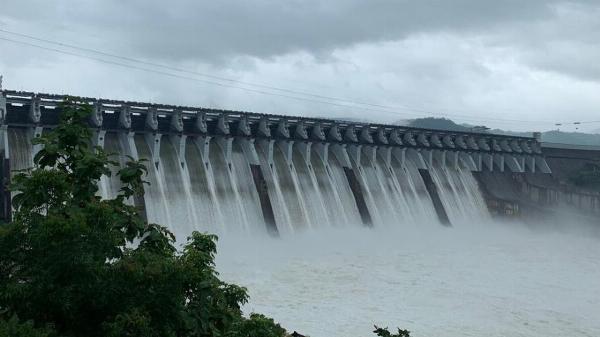Sardar Sarovar Dam: A Marvel of Modern Engineering

Strong 8k brings an ultra-HD IPTV experience to your living room and your pocket.
The Sardar Sarovar Dam stands as one of the largest and most ambitious water resource development projects in India. Located in the state of Gujarat, this dam is part of the Narmada Valley Project, which aims to provide water, power, and irrigation to millions. But beyond its imposing structure lies a story of human ingenuity, environmental debates, and socio-economic impacts that have shaped the region. Let’s dive deeper into the marvel that is the Sardar Sarovar Dam.
History of the Sardar Sarovar Dam
The journey of the Sardar Sarovar Dam began long before its construction. Conceived in the 1940s, the idea was to harness the mighty Narmada River, which flows through central India. However, it wasn’t until 1961, when then Prime Minister Jawaharlal Nehru laid the foundation stone, that the project gained real momentum. The dam faced numerous delays due to environmental concerns, funding issues, and legal battles, but it finally became operational in 2017.
Geographical Location
The Sardar Sarovar Dam is located in the village of Kevadia in the Narmada district of Gujarat. It is surrounded by picturesque landscapes, with the Narmada River flowing majestically through the region. The dam is strategically positioned to distribute water across four Indian states: Gujarat, Madhya Pradesh, Maharashtra, and Rajasthan.
Structural Features of the Dam
Sardar Sarovar Dam Height
The height of the Sardar Sarovar Dam is 163 meters (535 feet), making it one of the tallest dams in India. To put that in perspective, it is almost as tall as a 50-story building! This impressive height allows the dam to store a massive volume of water, which is crucial for irrigation, drinking water, and power generation.
In addition to its height, the dam stretches 1,210 meters (3,970 feet) in length and has a width of 16 meters (52 feet) at the base. The construction utilized modern engineering techniques and robust materials, ensuring the dam’s stability and durability against natural forces.
Purpose and Benefits of the Dam
The Sardar Sarovar Dam serves multiple purposes that are vital to the region’s development:
Irrigation: It provides irrigation water to over 18,000 square kilometers of farmland, significantly boosting agricultural productivity in the arid regions of Gujarat and Rajasthan.
Drinking Water Supply: The dam supplies drinking water to approximately 40 million people across 9,633 villages and 173 towns.
Hydroelectric Power Generation: The dam's hydroelectric power plant has a capacity of 1,450 megawatts, contributing significantly to the region's power supply.
Environmental Impact
Like all large-scale projects, the Sardar Sarovar Dam has its share of environmental impacts. On the positive side, it has helped in soil conservation and improved water management. However, the construction also led to the submergence of vast tracts of forest land, impacting local biodiversity. Environmental activists have raised concerns about the long-term effects on the ecosystem, leading to various mitigation efforts by the authorities.
Social Impact
The construction of the dam resulted in the displacement of thousands of families, predominantly from tribal communities. While the government implemented rehabilitation and resettlement programs, the process faced criticism for inadequate compensation and lack of proper facilities in resettled areas. The social impact remains a contentious aspect of the project, highlighting the challenges of balancing development with human rights.
Economic Impact
Economically, the Sardar Sarovar Dam has been a boon for Gujarat and the surrounding states. It has enhanced agricultural productivity, provided a reliable power source, and spurred regional development. The project has also opened up avenues for tourism, further boosting the local economy.
Challenges and Controversies
The Sardar Sarovar Dam has faced its share of challenges, from environmental lawsuits to protests by displaced communities. The Narmada Bachao Andolan, led by activist Medha Patkar, brought international attention to the plight of those affected by the dam. Despite these challenges, the project continued, albeit with modifications to address some of the concerns.
Hydroelectric Power Generation
The dam's hydroelectric power plant is a significant component of the Sardar Sarovar Project. It has two powerhouses: a riverbed powerhouse with an installed capacity of 1,200 megawatts and a canal head powerhouse of 250 megawatts. Together, they generate substantial electricity, which is distributed to Gujarat, Maharashtra, and Madhya Pradesh, aiding in the region’s energy needs.
The Narmada Canal System
An extensive canal network stems from the Sardar Sarovar Dam, known as the Narmada Canal System. It spans over 90,000 kilometers and plays a crucial role in distributing water across arid regions, transforming once-barren lands into fertile fields. This canal system is a lifeline for farmers, providing much-needed irrigation to sustain crops year-round.
Tourism at Sardar Sarovar Dam
The Sardar Sarovar Dam has become a popular tourist destination, thanks in part to the nearby Statue of Unity, the world’s tallest statue. Visitors can enjoy panoramic views from the dam’s viewing gallery, explore nearby gardens, and learn about the dam’s construction at the visitor center. The area’s natural beauty, combined with the engineering marvel, makes it a must-visit spot in Gujarat.
Future Prospects
Looking ahead, the Sardar Sarovar Dam is set for further enhancements to maximize its utility. There are plans to expand the canal network and improve the efficiency of water distribution. Moreover, the authorities are exploring sustainable measures to minimize environmental impacts and ensure the project’s benefits are long-lasting.
Conclusion
The Sardar Sarovar Dam is more than just a dam; it is a symbol of India’s quest for sustainable development. Despite the controversies and challenges, it stands tall as a testament to human ingenuity and determination. As the project continues to evolve, its legacy will be defined by how it balances the needs of people, the environment, and the economy.
FAQs
What is the height of the Sardar Sarovar Dam?
The Sardar Sarovar Dam stands 163 meters (535 feet) tall, making it one of the tallest dams in India.
How much electricity does the Sardar Sarovar Dam generate?
The dam generates a total of 1,450 megawatts of hydroelectric power, significantly contributing to the power supply of Gujarat, Maharashtra, and Madhya Pradesh.
How many people were displaced due to the dam?
Thousands of families, mainly from tribal communities, were displaced due to the construction of the Sardar Sarovar Dam. The exact number varies, but efforts were made to rehabilitate and resettle the affected populations.
What are the main benefits of the Sardar Sarovar Dam?
The primary benefits include irrigation for agriculture, drinking water supply, and hydroelectric power generation, which support millions of people across multiple states.
Is the Sardar Sarovar Dam open for tourists?
Yes, the Sardar Sarovar Dam is open for tourists. It offers several attractions, including viewing points, gardens, and educational centers, along with proximity to the Statue of Unity.
Note: IndiBlogHub features both user-submitted and editorial content. We do not verify third-party contributions. Read our Disclaimer and Privacy Policyfor details.


